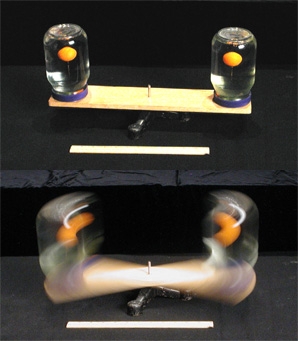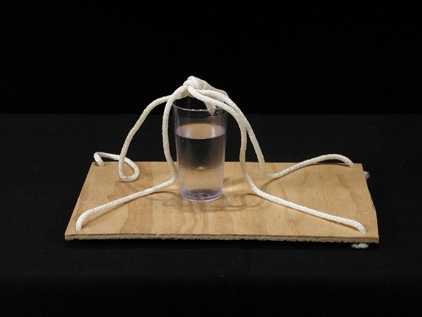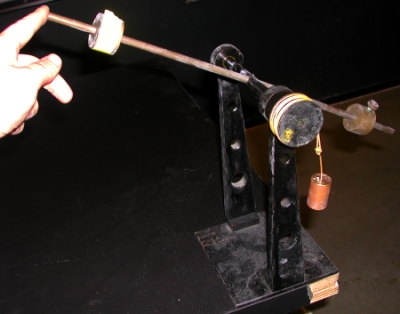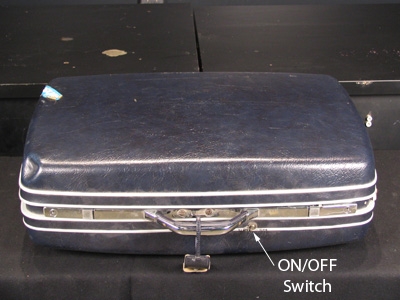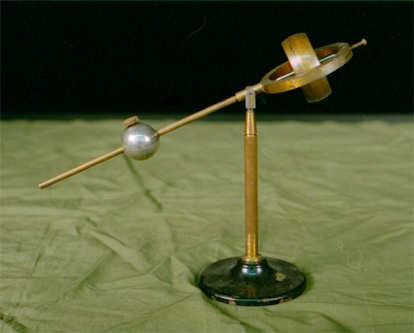A rigid rod executes simple harmonic motion about an adjustable pivot point.
What It Shows
The period of a physical pendulum is measured and compared to theory. The pivot point, and thus the period, is adjustable along the length of the pendulum making it possible to demonstrate that there is a pivot point where the period is a minimum (stationary point).
How It Works
The physical pendulum is a 1/2" diameter × 100cm long brass rod. A collar with a "knife edge" can be fixed anywhere along the length of the pendulum and serves as the pivot point. The period...
Read more about Physical Pendulum
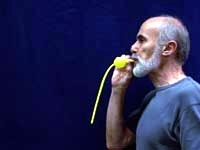 ...
...